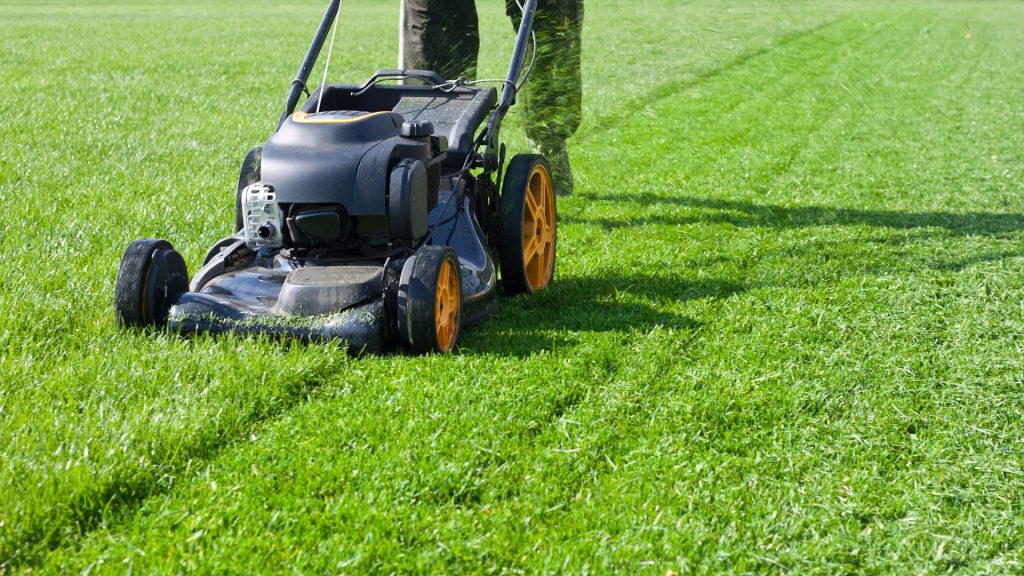
Best Time To Fertilize Lawn Before Or After Rain
You’ll want to pay close attention to this article and learn as much as you can if your lawn is far from being gorgeous.
The reason is simple: Applying fertilizers at the wrong time can thwart your best efforts.
We’re about to show you the best time to fertilize lawn before or after rain so your grass will benefit from the extra nutrients.
You’ll also find important fertilizer-related tips that you’ll want to take seriously.
But first, let’s take a quick look at how fertilizers work and why they are an important part of your lawn management and care practice.
How Fertilizers Work
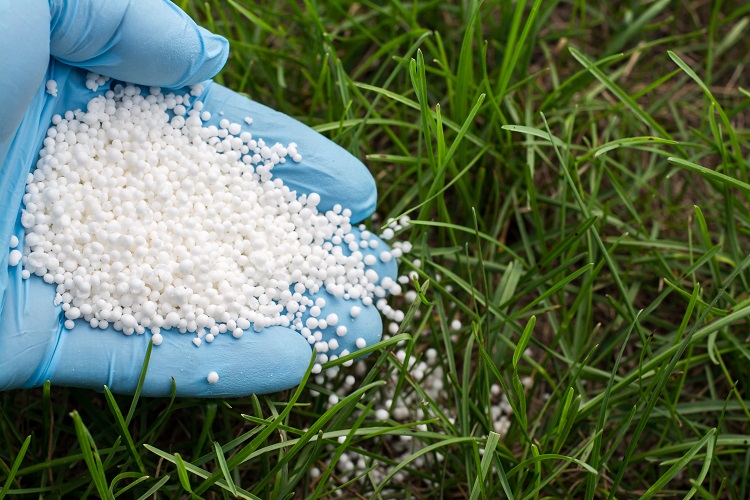
Fertilizing your lawn is not as easy as grabbing the next available product and spreading it across your turf.
You must understand the type of lawn you have and the right fertilizer to use (organic, synthetic, granular, or liquid).
Regardless of the type of fertilizer you use, they all serve one major purpose: they provide important minerals to your grass.
These minerals include:
Nitrogen (N)
This boosts the production of chlorophyll that’s necessary for healthy leaf growth. You are looking at the positive effects of nitrogen when you see a green, lush lawn.
Naturally, rainfall and mulched grass clippings provide some nitrogen to your lawn.
But you can add recommended amounts of nitrogen to your grass (by applying fertilizers) to provide adequate nourishment.
Phosphorous (P)
This helps your lawn grass develop healthy stems and roots. The essential mineral helps the roots of our grass to grow well. Phosphorus also stimulates grass seeds, helping them to sprout.
Your lawn or yard needs more grass to keep weeds at bay. And what better way to have more grass than stimulating root growth?
Also, when the root system is strong and healthy, your lawn can survive droughts.
Potassium (K)
This makes your grasses stronger so they can resist diseases and drought.
In simple terms, potassium immunizes your lawn against harsh conditions such as damages from foot traffic, drought, and extreme weather conditions.
The mineral also protects your grass against harmful elements that can weaken your lawn’s health. This makes it a bit difficult for diseases and fungus to get the upper hand on your lawn.
It is a mistake to dismiss the use of fertilizers even you have naturally fertile soil.
Of course, your lawn gets all the essential nutrients or minerals it needs from the soil, but the quantity may not be enough to keep your turf in a healthy condition throughout the growing season.
Here’s another factor to consider.
Most of the lawn maintenance activities that help you maintain a well-manicured turf can effectively remove nitrogen from the soil.
In other words, removing clippings, twigs, and fallen leaves from your lawn can deprive the soil of organic fertilizers.
Thankfully, you can buy and apply good-quality fertilizers to replenish depleted nutrients. This will allow for optimal grass growth.
Apart from promoting green, thick, and lush grass mat, fertilizers can help with weed and pest control.
This is especially the case if you use fertilizers formulated to kill weeds and discourage pests.
While all of this is true, using too much fertilizer can hurt your lawn. Excessive fertilizer application can burn the blades of your grass.
Also, too much fertilizer is not good for the environment.
Fertilizer Application Frequency
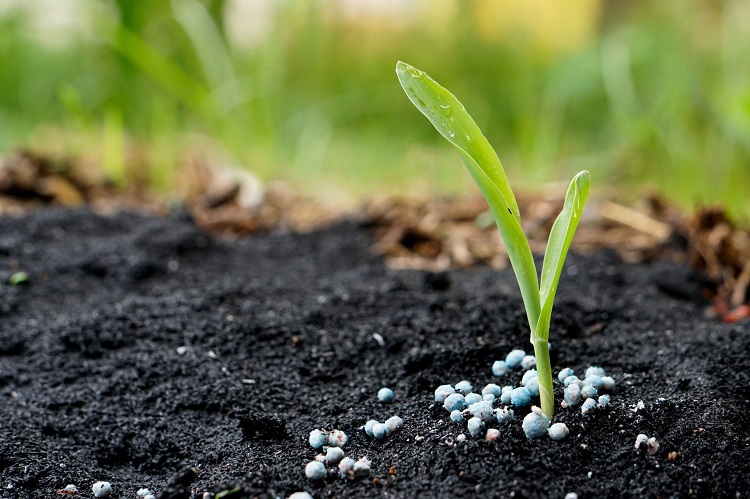
No doubt, fertilizers play an essential role in helping your lawn remain healthy. But you don’t want to overfeed your grass.
In most cases, applying fertilizers at least once or twice a year is enough to keep your turfgrass healthy and green.
However, it is okay to fertilize up to four times a year.
The exact number of times will depend on the type of lawn you have.
But no matter the type of lawn, the right season to apply fertilizer is when the grass is actively growing or growing the most.
For more details about fertilizer application frequency, check out our detailed guide on How Often Do You Need To Fertilize Your Lawn?
Should You Fertilize Your Lawn Before or After Rain?
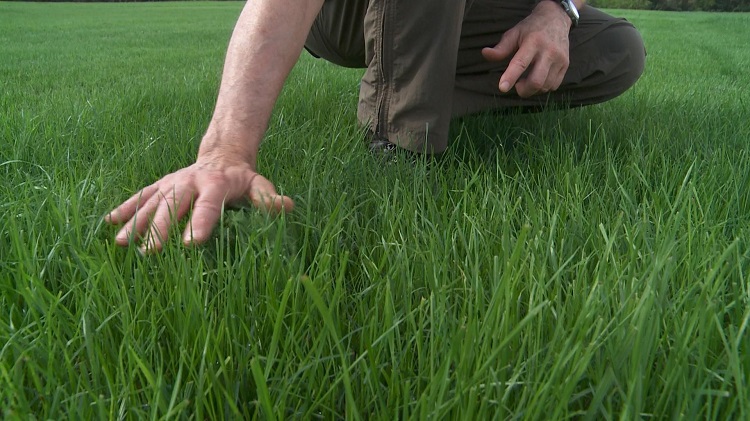
Rainfall plays a vital role in timing your fertilizer application. Getting the timing correct can make your grass absorb more nutrients and lead to a healthier lawn.
On the flip side, wrongly timing the fertilizer application can lead to ineffectiveness, waste, and environmental damage.
But is the best time to fertilize the lawn before or after rain?
Here’s a closer look at both times.
Fertilizing Your Lawn Before Rain

Applying fertilizer a couple of days before a light rain might be a good idea. But there are a few issues with this practice.
First, a heavy downpour can wash away your fertilizer and render it ineffective. In other words, your work done is equal to zero!
That’s not all. You would have wasted your investment, too!
Secondly, and even more troubling is the possibility of fertilizer runoff. This is bad for the environment and causes more harm than many people realize.
Also, predicting the weather can be a bit tricky since weather forecasts are not cast in stone.
You’ll have to watch the weather and hope that the rains will hold off for a few days after you apply the fertilizer.
If this doesn’t turn out to be correct, the problems mentioned above are likely to happen. To eliminate all the guesswork, consider fertilizing your lawn after rain.
Fertilizing Your Lawn After Rain
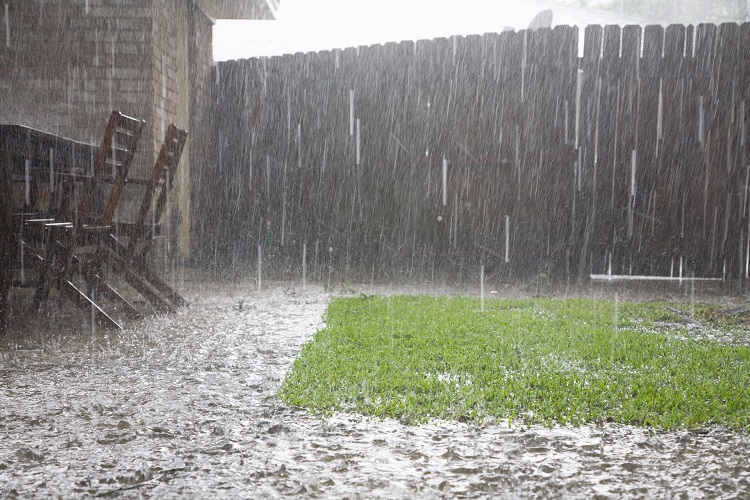
The best time to fertilize your lawn is after rain. More precisely, this should be about two days after rainfall.
You effectively remove the risk of polluting water sources if you apply fertilizers after rain. Besides being more effective, it is a more eco-friendly approach.
However, you should keep the following in mind.
- Aim to fertilize about two days after rain and at least two days away from the next heavy rain.
- Ideally, you should wait for the grass blades to dry out completely before applying fertilizers.
- Light rain a few days after fertilizer application is okay. But heavy rainfall right after application will nullify all your efforts.
- It is best to apply fertilizers when there will be steady sunlight following the days after using the fertilizer. Of course, this will mean checking the weather forecast.
But what if there has not been rainfall for a long time? Is it okay to apply fertilizer to completely dry soil?
The problem with using fertilizer on bone-dry soil is that it’s a lot difficult to evenly distribute the fertilizer.
That’s even a small problem compared to the difficult time the soil underneath your lawn will have in absorbing the nutrients effectively.
Your best bet would be to apply fertilizers after rain. The turf and soil are in a good condition to receive the nutrients and make the most out of the fertilizer.
The top layer of the soil still has just enough water from the rain. This makes it easier for the fertilizer to mix with the soil and the roots to absorb the minerals.
Tips for Fertilizing Your Lawn After Rain

Now that we’ve established the best time to fertilize your lawn, it is important to keep the following tips in mind to get the most out of lawn care efforts.
- Avoid fertilizing your lawn during a drought. Grasses are stressed from all the dryness and heat during such periods. Feeding your grass during a drought will yield little to no positive effects.
- Give your lawn light watering after applying fertilizer. But skip this if you’re expecting light rain before the end of the day.
- Leave fertilizer application to late afternoon or early evening. Your turf will absorb the nutrients better when the scorching sun is not high up in the sky.
- Fertilizers may be great for your turf but can be harmful to children and pets. This is especially the case if the product is combined with weed killers.
For this reason, it is best to keep kids and pets away from your lawn after applying fertilizers. Ideally, children and animals should keep off from your turf for at least 24 hours after fertilizing.
Too much nitrogen application usually means you will need to mow a bit more often. If possible, use products with slow-release nitrogen components.
However, if you live in an area with extreme flooding during the rainy season, slow-release nitrogen fertilizers are likely to be washed away.
Conclusion
To sum up: you want to apply fertilizer to your lawn when the turf is sufficiently dry but the soil still has enough water.
That’s another way of saying the best time to fertilize lawn before or after rain would be about two days after rainfall.
The nutrients are less likely to wash off at this time.
And your lawn care efforts won’t go to waste.
Resources:

